-
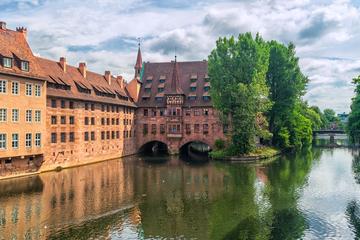 Nuremberg
Nuremberg As the second largest city in Bavaria and the main transport and tourism hub of Franconia, set on the Pegnitz River, Nuremberg’s (Nürnberg) popularity among tourists is undeniable. With a history dating back to 1050, the city is one of Germany’s oldest but sadly much of its original arch
Nuremberg
Nuremberg As the second largest city in Bavaria and the main transport and tourism hub of Franconia, set on the Pegnitz River, Nuremberg’s (Nürnberg) popularity among tourists is undeniable. With a history dating back to 1050, the city is one of Germany’s oldest but sadly much of its original arch
-
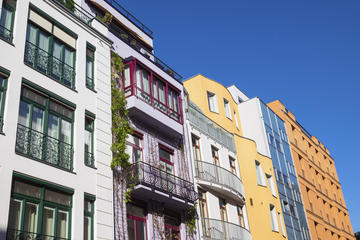 Prenzlauer Berg
Prenzlauer Berg Prenzlauer Berg is a neighborhood in Berlin west of Mitte and was part of East Berlin while the city was divided. During World War II, relatively few buildings were destroyed in this area compared with other parts of the city, and as a result, there are over 300 buildings are prote
Prenzlauer Berg
Prenzlauer Berg Prenzlauer Berg is a neighborhood in Berlin west of Mitte and was part of East Berlin while the city was divided. During World War II, relatively few buildings were destroyed in this area compared with other parts of the city, and as a result, there are over 300 buildings are prote
-
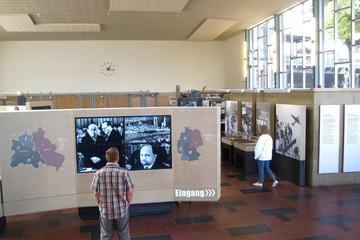 Palace of Tears
Palace of Tears Palace of Tears, or Tränenpalast in German, is a building at Berlins Friedrichstrasse station that was a border crossing point during the time when the city was split between East and West. It was used by people crossing into West Berlin, so those transiting through here were mostl
Palace of Tears
Palace of Tears Palace of Tears, or Tränenpalast in German, is a building at Berlins Friedrichstrasse station that was a border crossing point during the time when the city was split between East and West. It was used by people crossing into West Berlin, so those transiting through here were mostl
-
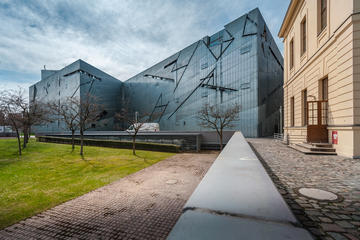 Jewish Museum (Jüdisches Museum)
Jewish Museum (Jüdisches Museum) The Jewish Museum in Munich, inaugurated in 2007, is dedicated to the city’s long Jewish history and is part of the massive Jewish Center on Sankt-Jakobs-Platz. This includes a synagogue, a community center, an elementary school, an auditorium, and a kosher restaur
Jewish Museum (Jüdisches Museum)
Jewish Museum (Jüdisches Museum) The Jewish Museum in Munich, inaugurated in 2007, is dedicated to the city’s long Jewish history and is part of the massive Jewish Center on Sankt-Jakobs-Platz. This includes a synagogue, a community center, an elementary school, an auditorium, and a kosher restaur
-
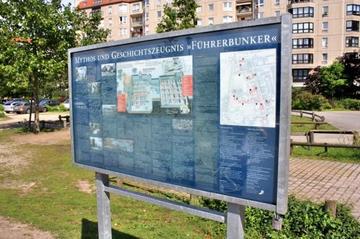 Führerbunker
Führerbunker The Führerbunker, translated to English means Leaders bunker was part of a subterranean bunker complex which was constructed in two major phases, one part in 1936 and the other in 1943. This bunker was a defensive military fortification designed to protect the inhabitants from falling
Führerbunker
Führerbunker The Führerbunker, translated to English means Leaders bunker was part of a subterranean bunker complex which was constructed in two major phases, one part in 1936 and the other in 1943. This bunker was a defensive military fortification designed to protect the inhabitants from falling
-
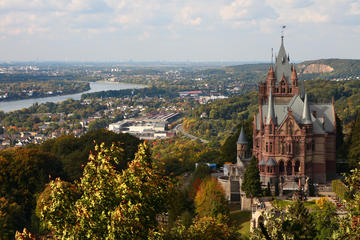 Bonn
Bonn When this friendly, relaxed city on the Rhine became West Germanys ‘temporary’ capital in 1949 it surprised many, including its own residents. When in 1991 a reunited German government decided to move back to Berlin, it shocked many, especially its own residents. More than 15 years
Bonn
Bonn When this friendly, relaxed city on the Rhine became West Germanys ‘temporary’ capital in 1949 it surprised many, including its own residents. When in 1991 a reunited German government decided to move back to Berlin, it shocked many, especially its own residents. More than 15 years
-
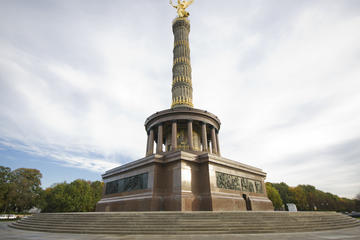 Berlin Victory Column (Siegessäule)
Berlin Victory Column (Siegessäule) Standing 67 meters (220 feet) high and topped with a 35-tonne gilded figure of Victoria – the Roman goddess of victory in battle – the Berlin Victory Column was inaugurated in 1873 to commemorate Germany’s (or Prussia, as it was called then) victory over Denmark
Berlin Victory Column (Siegessäule)
Berlin Victory Column (Siegessäule) Standing 67 meters (220 feet) high and topped with a 35-tonne gilded figure of Victoria – the Roman goddess of victory in battle – the Berlin Victory Column was inaugurated in 1873 to commemorate Germany’s (or Prussia, as it was called then) victory over Denmark
-
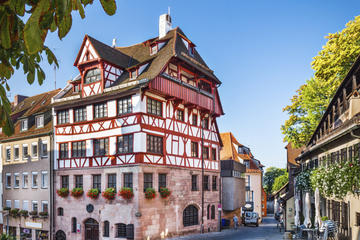 Albrecht Durer House
Albrecht Durer House Famous for his delicate and anatomically precise etchings, woodcuts and prints, Albrecht Dürer was a Northern Renaissance artist who lived all his life in Nuremberg between 1471 and 1528. During the 15th and 16th centuries, the city became one of Germany’s most successful comm
Albrecht Durer House
Albrecht Durer House Famous for his delicate and anatomically precise etchings, woodcuts and prints, Albrecht Dürer was a Northern Renaissance artist who lived all his life in Nuremberg between 1471 and 1528. During the 15th and 16th centuries, the city became one of Germany’s most successful comm
-
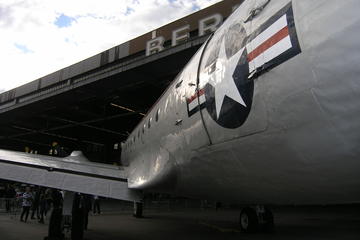 Tempelhof Airport
Tempelhof Airport Tempelhof Airport was designated as an airport in 1923, but it is well known for its significance in post-World War II Berlin. In 1948, Soviet authorities halted all traffic by land and water in and out of West Berlin and because West Berlin was surrounded by East Berlin and East
Tempelhof Airport
Tempelhof Airport Tempelhof Airport was designated as an airport in 1923, but it is well known for its significance in post-World War II Berlin. In 1948, Soviet authorities halted all traffic by land and water in and out of West Berlin and because West Berlin was surrounded by East Berlin and East
-
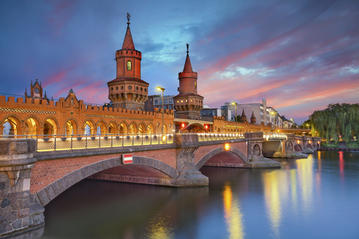 Oberbaum Bridge
Oberbaum Bridge The Oberbaum Bridge, or Oberbaumbrücke in German, was built in the late 1800s and crosses the River Spree to connect the neighborhoods of Kreuzberg and Friedrichshain in Berlin. The bridge has mock medieval turrets and seven arches. Its a two level bridge with the lower level for c
Oberbaum Bridge
Oberbaum Bridge The Oberbaum Bridge, or Oberbaumbrücke in German, was built in the late 1800s and crosses the River Spree to connect the neighborhoods of Kreuzberg and Friedrichshain in Berlin. The bridge has mock medieval turrets and seven arches. Its a two level bridge with the lower level for c
-
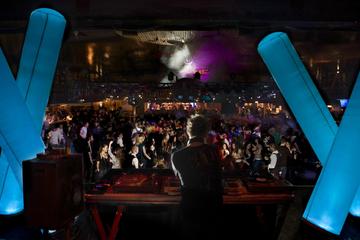 Grosse Freiheit 36
Grosse Freiheit 36 Hamburg is famous for its Beatles history. Its the city where the band got their start by playing at various clubs near Reperbahn in the St. Pauli neighborhood, Hamburgs red light district. This is where they eventually gained worldwide fame. Of the many clubs they appeared at,
Grosse Freiheit 36
Grosse Freiheit 36 Hamburg is famous for its Beatles history. Its the city where the band got their start by playing at various clubs near Reperbahn in the St. Pauli neighborhood, Hamburgs red light district. This is where they eventually gained worldwide fame. Of the many clubs they appeared at,
-
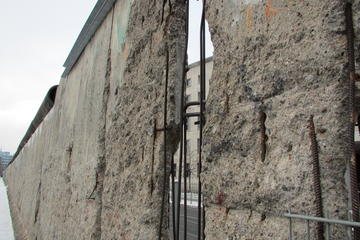 Topography of Terror
Topography of Terror The Topography of Terror exhibition and documentation center covers the history of terror during the Nazi era. The centers of this national-socialist terror between 1933 and 1945 were the Gestapo and its prison, the SS headquarters, the SS Security Service (SD) and the Reichss
Topography of Terror
Topography of Terror The Topography of Terror exhibition and documentation center covers the history of terror during the Nazi era. The centers of this national-socialist terror between 1933 and 1945 were the Gestapo and its prison, the SS headquarters, the SS Security Service (SD) and the Reichss
-
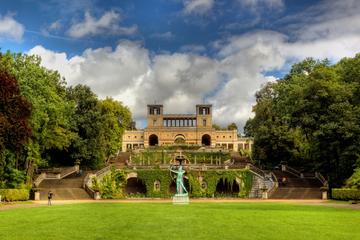 Potsdams Gardens
Potsdams Gardens Potsdam acquired some importance when the Great Elector of Brandenburg Frederick William established his residence here, where a small garrison was housed from 1640 onward; the sites military function was strengthened by the young Prussian monarchy. Potsdam later changed under the
Potsdams Gardens
Potsdams Gardens Potsdam acquired some importance when the Great Elector of Brandenburg Frederick William established his residence here, where a small garrison was housed from 1640 onward; the sites military function was strengthened by the young Prussian monarchy. Potsdam later changed under the
-
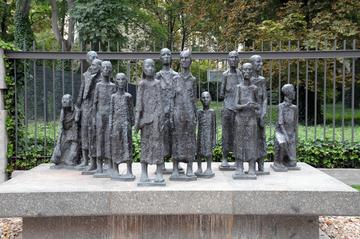 Old Jewish Cemetery (Alter Juedischer Friedhof)
Old Jewish Cemetery (Alter Juedischer Friedhof) The Old Jewish Cemetery is one of the oldest Jewish cemeteries in Berlin. It was built in 1672 and contains the grave of Moses Mendelssohn, a philosopher and the forefather of Jewish Enlightenment in the 1700s. It is estimated that around 12,000 Jewi
Old Jewish Cemetery (Alter Juedischer Friedhof)
Old Jewish Cemetery (Alter Juedischer Friedhof) The Old Jewish Cemetery is one of the oldest Jewish cemeteries in Berlin. It was built in 1672 and contains the grave of Moses Mendelssohn, a philosopher and the forefather of Jewish Enlightenment in the 1700s. It is estimated that around 12,000 Jewi
-
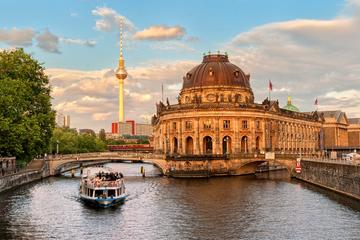 Museumsinsel (Museum Island)
Museumsinsel (Museum Island) Located on the northern tip of Spree Island, Berlin’s Museumsinsel (Museum Island) is an ensemble of five world-renowned museums. In 1830, King Friedrich Wilhelm III commissioned the construction of the Royal Museum - now the Altes Museum - to allow the general public
Museumsinsel (Museum Island)
Museumsinsel (Museum Island) Located on the northern tip of Spree Island, Berlin’s Museumsinsel (Museum Island) is an ensemble of five world-renowned museums. In 1830, King Friedrich Wilhelm III commissioned the construction of the Royal Museum - now the Altes Museum - to allow the general public
-
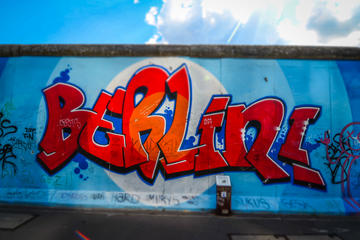 Kreuzberg
Kreuzberg Kreuzberg makes up the western side of the Friedrichshain-Kreuzberg district, though the two sides are still referred to separately since they were only joined together in 2001. When the city was divided up after the war, the border between east and west ran in between Friedrichshain and
Kreuzberg
Kreuzberg Kreuzberg makes up the western side of the Friedrichshain-Kreuzberg district, though the two sides are still referred to separately since they were only joined together in 2001. When the city was divided up after the war, the border between east and west ran in between Friedrichshain and
-
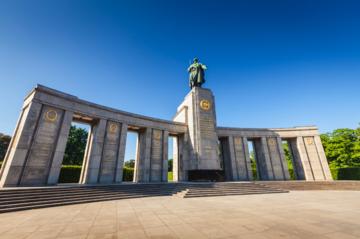 Soviet War Memorial
Soviet War Memorial In Berlin there are three Soviet War Memorials. One is located in the northern end of the city in the Pankow district, one is in the southern end of the city in Treptow Park, and one is in the center of the city in Tiergarten. The memorial in Tiergarten is probably the most wel
Soviet War Memorial
Soviet War Memorial In Berlin there are three Soviet War Memorials. One is located in the northern end of the city in the Pankow district, one is in the southern end of the city in Treptow Park, and one is in the center of the city in Tiergarten. The memorial in Tiergarten is probably the most wel
-
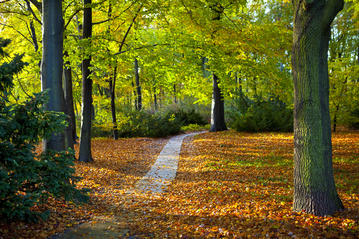 Tiergarten Park
Tiergarten Park Berlin’s Central Park is Tiergarten, a huge stretch of parkland, formal gardens and leafy walkways in the city’s west. Until the 1830s the parkland was used as a hunting ground. Today it houses the home of the German President, an array of public sculptures and memorials, canals an
Tiergarten Park
Tiergarten Park Berlin’s Central Park is Tiergarten, a huge stretch of parkland, formal gardens and leafy walkways in the city’s west. Until the 1830s the parkland was used as a hunting ground. Today it houses the home of the German President, an array of public sculptures and memorials, canals an
-
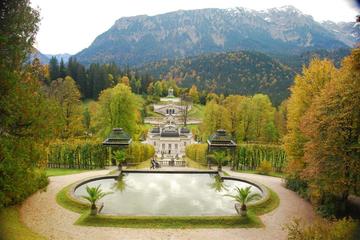 Linderhof Castle
Linderhof Castle Ludwig II had a habit of designing palaces after his idols. In the case of Linderhof Palace, the inspiration was the Sun-King Louis XIV and Versailles as he built up the Kings Cottage. Sun decor, hall of mirrors, and a smaller scale version of Versailles Ambassadors staircase are
Linderhof Castle
Linderhof Castle Ludwig II had a habit of designing palaces after his idols. In the case of Linderhof Palace, the inspiration was the Sun-King Louis XIV and Versailles as he built up the Kings Cottage. Sun decor, hall of mirrors, and a smaller scale version of Versailles Ambassadors staircase are
-
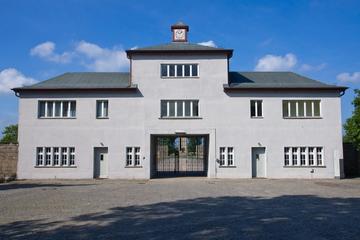 Sachsenhausen Concentration Camp
Sachsenhausen Concentration Camp Located just north of Berlin, Sachsenhausen Concentration Camp was one of the most notorious death camps of the Nazi regime. The site was built in the summer of 1936 by prisoners from the Emsland camps and was used to train SS Officers who went on to command other
Sachsenhausen Concentration Camp
Sachsenhausen Concentration Camp Located just north of Berlin, Sachsenhausen Concentration Camp was one of the most notorious death camps of the Nazi regime. The site was built in the summer of 1936 by prisoners from the Emsland camps and was used to train SS Officers who went on to command other
Total
2004 -travel
FirstPage PreviousPage NextPage LastPage CurrentPage:
12/101 20-travel/Page GoTo Page:
 Nuremberg
Nuremberg As the second largest city in Bavaria and the main transport and tourism hub of Franconia, set on the Pegnitz River, Nuremberg’s (Nürnberg) popularity among tourists is undeniable. With a history dating back to 1050, the city is one of Germany’s oldest but sadly much of its original arch
Nuremberg
Nuremberg As the second largest city in Bavaria and the main transport and tourism hub of Franconia, set on the Pegnitz River, Nuremberg’s (Nürnberg) popularity among tourists is undeniable. With a history dating back to 1050, the city is one of Germany’s oldest but sadly much of its original arch
 Prenzlauer Berg
Prenzlauer Berg Prenzlauer Berg is a neighborhood in Berlin west of Mitte and was part of East Berlin while the city was divided. During World War II, relatively few buildings were destroyed in this area compared with other parts of the city, and as a result, there are over 300 buildings are prote
Prenzlauer Berg
Prenzlauer Berg Prenzlauer Berg is a neighborhood in Berlin west of Mitte and was part of East Berlin while the city was divided. During World War II, relatively few buildings were destroyed in this area compared with other parts of the city, and as a result, there are over 300 buildings are prote
 Palace of Tears
Palace of Tears Palace of Tears, or Tränenpalast in German, is a building at Berlins Friedrichstrasse station that was a border crossing point during the time when the city was split between East and West. It was used by people crossing into West Berlin, so those transiting through here were mostl
Palace of Tears
Palace of Tears Palace of Tears, or Tränenpalast in German, is a building at Berlins Friedrichstrasse station that was a border crossing point during the time when the city was split between East and West. It was used by people crossing into West Berlin, so those transiting through here were mostl
 Jewish Museum (Jüdisches Museum)
Jewish Museum (Jüdisches Museum) The Jewish Museum in Munich, inaugurated in 2007, is dedicated to the city’s long Jewish history and is part of the massive Jewish Center on Sankt-Jakobs-Platz. This includes a synagogue, a community center, an elementary school, an auditorium, and a kosher restaur
Jewish Museum (Jüdisches Museum)
Jewish Museum (Jüdisches Museum) The Jewish Museum in Munich, inaugurated in 2007, is dedicated to the city’s long Jewish history and is part of the massive Jewish Center on Sankt-Jakobs-Platz. This includes a synagogue, a community center, an elementary school, an auditorium, and a kosher restaur
 Führerbunker
Führerbunker The Führerbunker, translated to English means Leaders bunker was part of a subterranean bunker complex which was constructed in two major phases, one part in 1936 and the other in 1943. This bunker was a defensive military fortification designed to protect the inhabitants from falling
Führerbunker
Führerbunker The Führerbunker, translated to English means Leaders bunker was part of a subterranean bunker complex which was constructed in two major phases, one part in 1936 and the other in 1943. This bunker was a defensive military fortification designed to protect the inhabitants from falling
 Bonn
Bonn When this friendly, relaxed city on the Rhine became West Germanys ‘temporary’ capital in 1949 it surprised many, including its own residents. When in 1991 a reunited German government decided to move back to Berlin, it shocked many, especially its own residents. More than 15 years
Bonn
Bonn When this friendly, relaxed city on the Rhine became West Germanys ‘temporary’ capital in 1949 it surprised many, including its own residents. When in 1991 a reunited German government decided to move back to Berlin, it shocked many, especially its own residents. More than 15 years
 Berlin Victory Column (Siegessäule)
Berlin Victory Column (Siegessäule) Standing 67 meters (220 feet) high and topped with a 35-tonne gilded figure of Victoria – the Roman goddess of victory in battle – the Berlin Victory Column was inaugurated in 1873 to commemorate Germany’s (or Prussia, as it was called then) victory over Denmark
Berlin Victory Column (Siegessäule)
Berlin Victory Column (Siegessäule) Standing 67 meters (220 feet) high and topped with a 35-tonne gilded figure of Victoria – the Roman goddess of victory in battle – the Berlin Victory Column was inaugurated in 1873 to commemorate Germany’s (or Prussia, as it was called then) victory over Denmark
 Albrecht Durer House
Albrecht Durer House Famous for his delicate and anatomically precise etchings, woodcuts and prints, Albrecht Dürer was a Northern Renaissance artist who lived all his life in Nuremberg between 1471 and 1528. During the 15th and 16th centuries, the city became one of Germany’s most successful comm
Albrecht Durer House
Albrecht Durer House Famous for his delicate and anatomically precise etchings, woodcuts and prints, Albrecht Dürer was a Northern Renaissance artist who lived all his life in Nuremberg between 1471 and 1528. During the 15th and 16th centuries, the city became one of Germany’s most successful comm
 Tempelhof Airport
Tempelhof Airport Tempelhof Airport was designated as an airport in 1923, but it is well known for its significance in post-World War II Berlin. In 1948, Soviet authorities halted all traffic by land and water in and out of West Berlin and because West Berlin was surrounded by East Berlin and East
Tempelhof Airport
Tempelhof Airport Tempelhof Airport was designated as an airport in 1923, but it is well known for its significance in post-World War II Berlin. In 1948, Soviet authorities halted all traffic by land and water in and out of West Berlin and because West Berlin was surrounded by East Berlin and East
 Oberbaum Bridge
Oberbaum Bridge The Oberbaum Bridge, or Oberbaumbrücke in German, was built in the late 1800s and crosses the River Spree to connect the neighborhoods of Kreuzberg and Friedrichshain in Berlin. The bridge has mock medieval turrets and seven arches. Its a two level bridge with the lower level for c
Oberbaum Bridge
Oberbaum Bridge The Oberbaum Bridge, or Oberbaumbrücke in German, was built in the late 1800s and crosses the River Spree to connect the neighborhoods of Kreuzberg and Friedrichshain in Berlin. The bridge has mock medieval turrets and seven arches. Its a two level bridge with the lower level for c
 Grosse Freiheit 36
Grosse Freiheit 36 Hamburg is famous for its Beatles history. Its the city where the band got their start by playing at various clubs near Reperbahn in the St. Pauli neighborhood, Hamburgs red light district. This is where they eventually gained worldwide fame. Of the many clubs they appeared at,
Grosse Freiheit 36
Grosse Freiheit 36 Hamburg is famous for its Beatles history. Its the city where the band got their start by playing at various clubs near Reperbahn in the St. Pauli neighborhood, Hamburgs red light district. This is where they eventually gained worldwide fame. Of the many clubs they appeared at,
 Topography of Terror
Topography of Terror The Topography of Terror exhibition and documentation center covers the history of terror during the Nazi era. The centers of this national-socialist terror between 1933 and 1945 were the Gestapo and its prison, the SS headquarters, the SS Security Service (SD) and the Reichss
Topography of Terror
Topography of Terror The Topography of Terror exhibition and documentation center covers the history of terror during the Nazi era. The centers of this national-socialist terror between 1933 and 1945 were the Gestapo and its prison, the SS headquarters, the SS Security Service (SD) and the Reichss
 Potsdams Gardens
Potsdams Gardens Potsdam acquired some importance when the Great Elector of Brandenburg Frederick William established his residence here, where a small garrison was housed from 1640 onward; the sites military function was strengthened by the young Prussian monarchy. Potsdam later changed under the
Potsdams Gardens
Potsdams Gardens Potsdam acquired some importance when the Great Elector of Brandenburg Frederick William established his residence here, where a small garrison was housed from 1640 onward; the sites military function was strengthened by the young Prussian monarchy. Potsdam later changed under the
 Old Jewish Cemetery (Alter Juedischer Friedhof)
Old Jewish Cemetery (Alter Juedischer Friedhof) The Old Jewish Cemetery is one of the oldest Jewish cemeteries in Berlin. It was built in 1672 and contains the grave of Moses Mendelssohn, a philosopher and the forefather of Jewish Enlightenment in the 1700s. It is estimated that around 12,000 Jewi
Old Jewish Cemetery (Alter Juedischer Friedhof)
Old Jewish Cemetery (Alter Juedischer Friedhof) The Old Jewish Cemetery is one of the oldest Jewish cemeteries in Berlin. It was built in 1672 and contains the grave of Moses Mendelssohn, a philosopher and the forefather of Jewish Enlightenment in the 1700s. It is estimated that around 12,000 Jewi
 Museumsinsel (Museum Island)
Museumsinsel (Museum Island) Located on the northern tip of Spree Island, Berlin’s Museumsinsel (Museum Island) is an ensemble of five world-renowned museums. In 1830, King Friedrich Wilhelm III commissioned the construction of the Royal Museum - now the Altes Museum - to allow the general public
Museumsinsel (Museum Island)
Museumsinsel (Museum Island) Located on the northern tip of Spree Island, Berlin’s Museumsinsel (Museum Island) is an ensemble of five world-renowned museums. In 1830, King Friedrich Wilhelm III commissioned the construction of the Royal Museum - now the Altes Museum - to allow the general public
 Kreuzberg
Kreuzberg Kreuzberg makes up the western side of the Friedrichshain-Kreuzberg district, though the two sides are still referred to separately since they were only joined together in 2001. When the city was divided up after the war, the border between east and west ran in between Friedrichshain and
Kreuzberg
Kreuzberg Kreuzberg makes up the western side of the Friedrichshain-Kreuzberg district, though the two sides are still referred to separately since they were only joined together in 2001. When the city was divided up after the war, the border between east and west ran in between Friedrichshain and
 Soviet War Memorial
Soviet War Memorial In Berlin there are three Soviet War Memorials. One is located in the northern end of the city in the Pankow district, one is in the southern end of the city in Treptow Park, and one is in the center of the city in Tiergarten. The memorial in Tiergarten is probably the most wel
Soviet War Memorial
Soviet War Memorial In Berlin there are three Soviet War Memorials. One is located in the northern end of the city in the Pankow district, one is in the southern end of the city in Treptow Park, and one is in the center of the city in Tiergarten. The memorial in Tiergarten is probably the most wel
 Tiergarten Park
Tiergarten Park Berlin’s Central Park is Tiergarten, a huge stretch of parkland, formal gardens and leafy walkways in the city’s west. Until the 1830s the parkland was used as a hunting ground. Today it houses the home of the German President, an array of public sculptures and memorials, canals an
Tiergarten Park
Tiergarten Park Berlin’s Central Park is Tiergarten, a huge stretch of parkland, formal gardens and leafy walkways in the city’s west. Until the 1830s the parkland was used as a hunting ground. Today it houses the home of the German President, an array of public sculptures and memorials, canals an
 Linderhof Castle
Linderhof Castle Ludwig II had a habit of designing palaces after his idols. In the case of Linderhof Palace, the inspiration was the Sun-King Louis XIV and Versailles as he built up the Kings Cottage. Sun decor, hall of mirrors, and a smaller scale version of Versailles Ambassadors staircase are
Linderhof Castle
Linderhof Castle Ludwig II had a habit of designing palaces after his idols. In the case of Linderhof Palace, the inspiration was the Sun-King Louis XIV and Versailles as he built up the Kings Cottage. Sun decor, hall of mirrors, and a smaller scale version of Versailles Ambassadors staircase are
 Sachsenhausen Concentration Camp
Sachsenhausen Concentration Camp Located just north of Berlin, Sachsenhausen Concentration Camp was one of the most notorious death camps of the Nazi regime. The site was built in the summer of 1936 by prisoners from the Emsland camps and was used to train SS Officers who went on to command other
Sachsenhausen Concentration Camp
Sachsenhausen Concentration Camp Located just north of Berlin, Sachsenhausen Concentration Camp was one of the most notorious death camps of the Nazi regime. The site was built in the summer of 1936 by prisoners from the Emsland camps and was used to train SS Officers who went on to command other